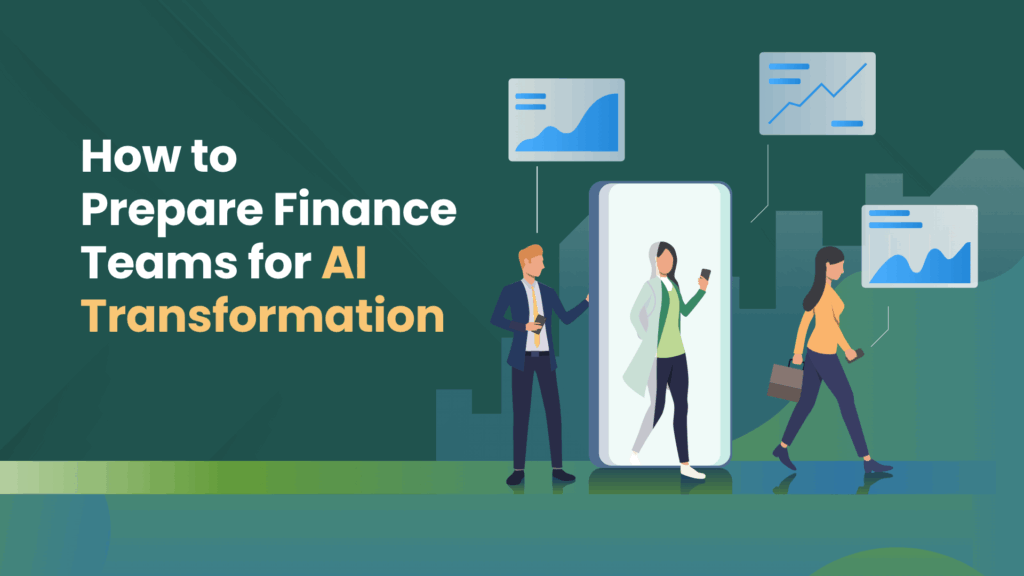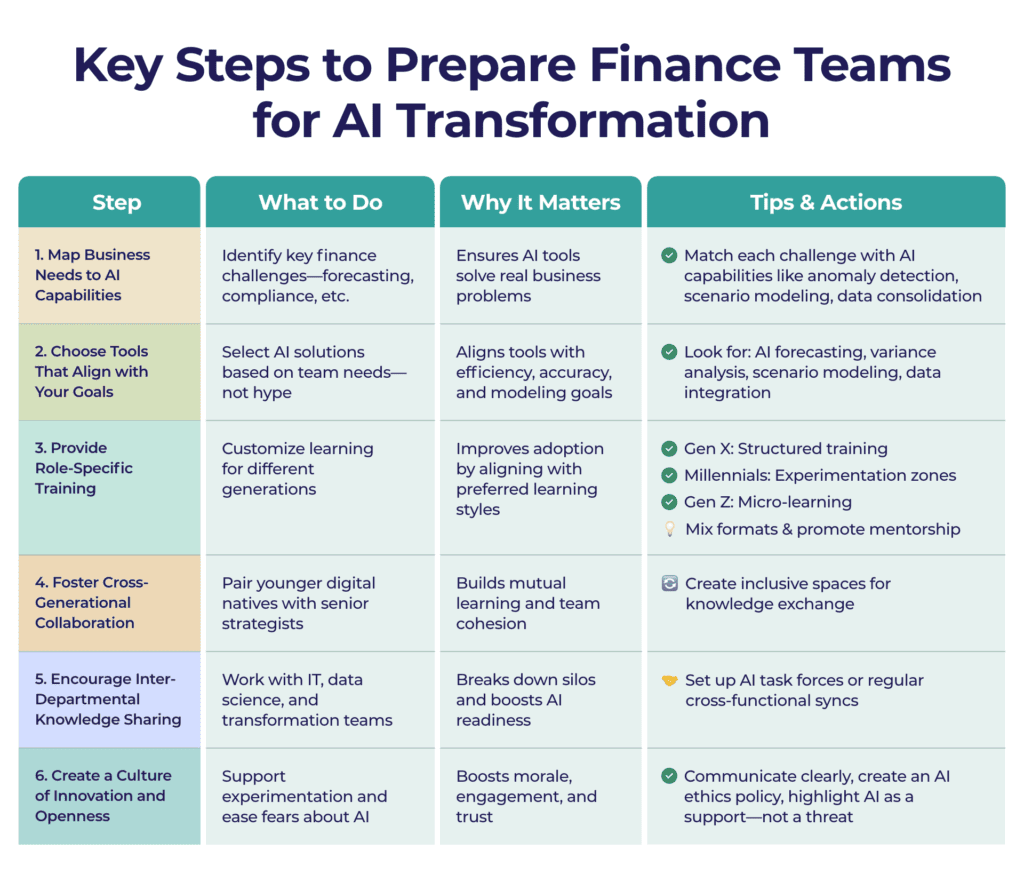How to Prepare Finance Teams for AI Transformation

What steps can finance leaders take to prepare their teams for the rise of AI in the finance industry?
Preparing finance teams for AI in finance requires more than adopting new tools—it demands a shift in mindset, skill sets, and team dynamics. Successful finance transformation begins with aligning AI solutions to real business needs, closing digital skills gaps, and fostering collaboration across generations and departments. By leveraging AI thoughtfully, finance leaders can create agile, data-driven teams ready to lead in the evolving finance industry.
Why Does AI Transformation Matter in Finance?
The rapid rise of AI in the finance industry is changing how teams plan, forecast, and make decisions. From anomaly detection and predictive modeling to automated reporting and compliance, AI is no longer just a future concept—it’s a present reality.
As finance takes on a more strategic business role, teams must be equipped to integrate AI tools into daily workflows. But transformation isn’t just about tech—it’s about people. According to Workday and HighRadius, AI-enabled finance teams outperform traditional ones by being faster, more accurate, and better aligned with business priorities.
What Are the Key Steps to Prepare Finance Teams for AI?
Implementing AI in finance begins with a practical and people-centric approach. Here are six foundational steps:

1. Map Business Needs to AI Capabilities
Start by identifying where AI can make the biggest impact. Is it in forecasting? Variance analysis? Compliance?
✅ Tip: Match each finance challenge with an AI capability—like anomaly detection, scenario modeling, or automated data consolidation.
2. Choose Tools That Align with Your Goals
Don’t chase flashy tech. Evaluate AI solutions based on your team’s actual needs, such as improved efficiency, better reporting, or real-time financial modeling.
✅ Look for features like:
- AI-powered forecasting
- Automated variance analysis
- Consolidation of multi-source data
- Dynamic scenario modeling
3. Provide Role-Specific Training
One size does not fit all when it comes to upskilling. According to Raconteur, different generations of workers benefit from different formats:
| Generation | Preferred Learning Style |
| Gen X | Structured, formal training |
| Millennials | Safe spaces for experimentation |
| Gen Z | Micro-learning (e.g., short videos, interactive) |
✅ Action step: Mix learning formats and encourage peer mentorship.
4. Foster Cross-Generational Collaboration
Encourage younger team members to mentor others in using new AI tools, while experienced professionals offer strategic and ethical guidance.
🔄 Goal: Create a safe, inclusive space for learning and experimenting with AI across experience levels.
5. Encourage Inter-Departmental Knowledge Sharing
Finance doesn’t need to lead AI transformation alone. Involve IT, data science, and other tech functions early on to accelerate adoption and overcome skills gaps.
🤝 Tip: Break down silos by creating AI task forces or regular syncs between finance and tech leaders.
6. Create a Culture of Innovation and Openness
AI adoption succeeds when people feel supported, not threatened. Build trust by clearly communicating the benefits of AI and addressing concerns transparently.
✅ Tip: Establish an internal AI ethics policy and communicate that AI is a support—not a replacement—for human decision-making.
What Does a Finance AI-Ready Team Look Like?
An AI-ready finance team is defined not just by tools, but by capabilities and behaviors:
| Attribute | Why It Matters |
| Data-driven mindset | Enables proactive decision-making based on real-time insights |
| Comfort with tech tools | Ensures efficient adoption of automation and analytics |
| Collaboration across roles | Breaks down silos and enhances problem-solving |
| Continuous learning culture | Keeps the team adaptable as AI tools evolve |
| Strategic perspective | Links AI capabilities to broader business goals |
The Risks of Delaying AI Adoption in Finance
Failing to act on AI now can lead to:
- Inefficient processes and duplicated effort
- Reduced competitiveness compared to tech-forward teams
- Talent attrition due to lack of innovation
- Inability to meet the demands of fast, data-driven decision-making
As Cube Software puts it, each finance team has unique requirements—ignoring AI risks missing significant efficiency gains and strategic opportunities.
Want to Build a Finance Team Ready for AI?
GrowCFO Premium offers courses, toolkits, and community support to help you lead your team through digital transformation, adopt AI with confidence, and future-proof your finance capabilities.
Get access to practical resources and on-demand training.
Final Thought
The path to a high-performing, AI-enabled finance team doesn’t start with technology—it starts with leadership. By aligning tools with strategy, investing in tailored upskilling, and building a collaborative culture, you can transform your team into a future-ready force. AI in finance isn’t about replacing people—it’s about empowering them to lead the future of finance.





Responses